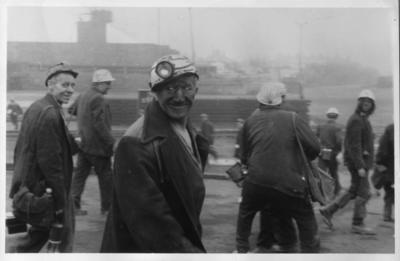Study of Three Birmingham Schools, UK
-
Darcy Lange
b.1946
d.2005

Title
Study of Three Birmingham Schools, UK
Details
| Production Date | 1976 |
|---|---|
| Collection(s) | Collection Govett-Brewster Art Gallery, New Plymouth. Purchased from Monica Brewster Bequest with the assistance of the Queen Elizabeth II Arts Council of New Zealand in 1983 |
| Accession Number | 83/1/10 |
| Media | U-matic 3/4" PAL 625 videotape |
About
This work belongs to the series commonly known as Work studies in schools where Darcy Lange focused on the process of teaching and learning in the classroom. The first of these studies took place in 1976 in the English city of Birmingham where Lange videotaped a number of classrooms in three schools seeking to represent different social classes by recording in both private and public schools. He also videotaped a wide range of subjects. In the later studies in four Oxfordshire schools in 1977, he focused on the teaching of art, history and science and introduced systematically the element of feedback. For the first time, Lange not only videotaped each class in action but also watched the tapes with the teachers and then the students, each time recording their reactions to the tapes. Their responses became incorporated into the work and guided its development.
Study of three Birmingham schools in many ways continues some of the concerns of Lange’s Work studies. As such, these are studies of teaching performances where Lange systematically sets himself to attentively record facial expressions or the use of hands or body movements in the teachers’ interaction with the students, as exemplified in the study ‘Mr. Hughes, The Wheel’ from Leabank Junior School in Birmingham. However, with Work studies in schools Lange introduces and examines language for the first time; particularly, how the subject is defined by linguistic parameters marking social differences such as gender, race, class, cultural and economic backgrounds, as well as ideological — such as in his Birmingham study ‘Mr Perks’s lesson on Orwell’s Animal Farm’— thereby, as Lange stated, aiming to “illustrate the social breakdown within each class”.
When one examines the material as an audience, these studies are shown to question the process of teaching as well as the video work itself. This practice mirrors the participation Lange sought from his larger audience. Because Lange resisted manipulation of the image, he countered the techniques used by mass media to influence viewers. The audience is left alone to interpret the material they see. They are encouraged to compare the various teachers, schools and subjects, and are invited to question teaching as a socially constructive force, without defining what that role is. Lange saw his tapes as material for ‘research’ and an ‘educational process’ in which the reactions of his subjects to the footage were just as important as the classroom studies. With these he sought the potential to effect social transformation and change.

